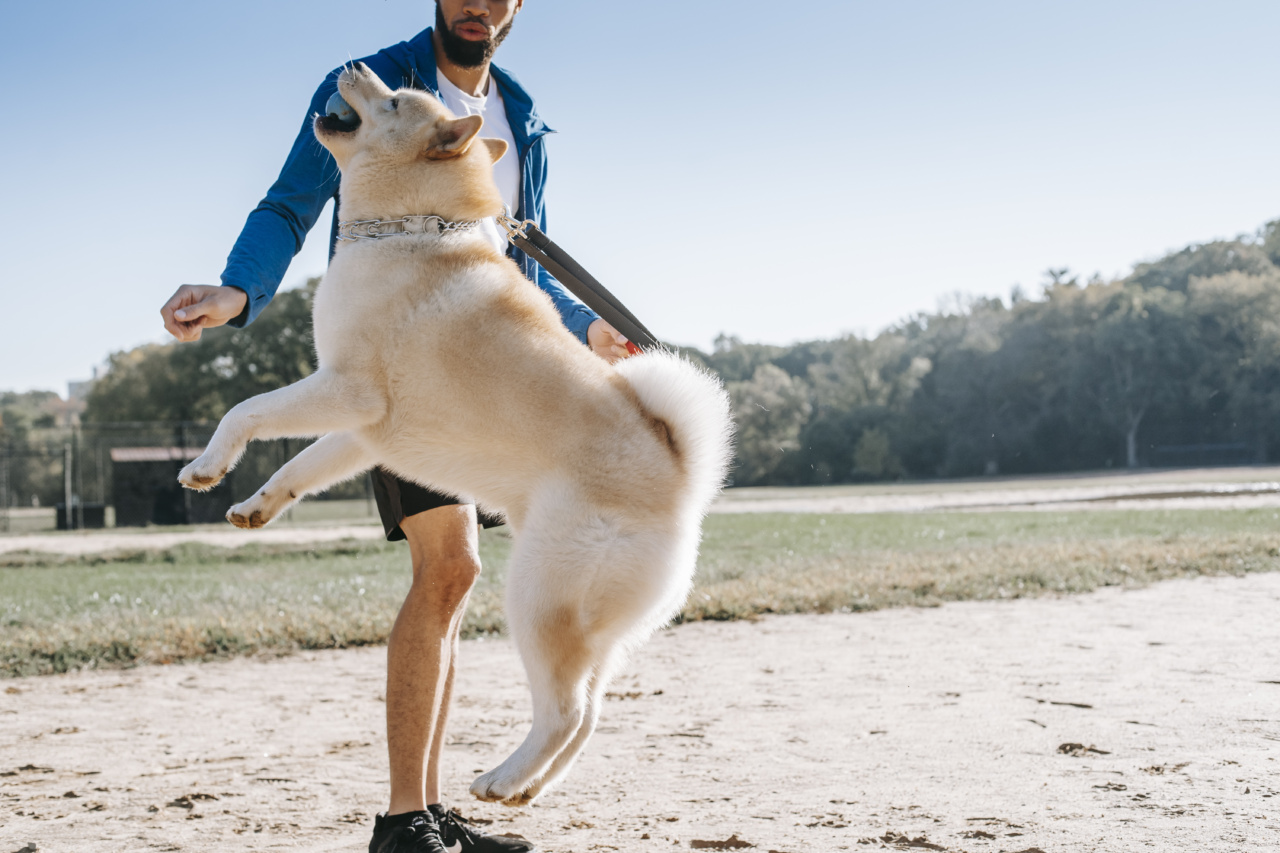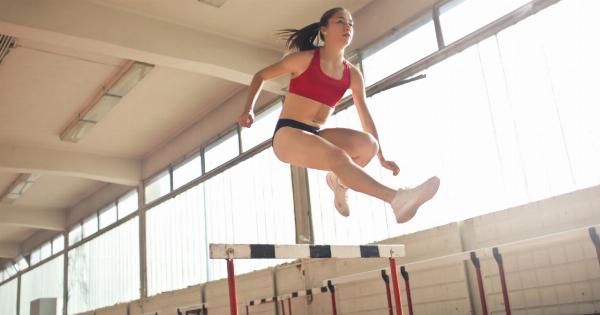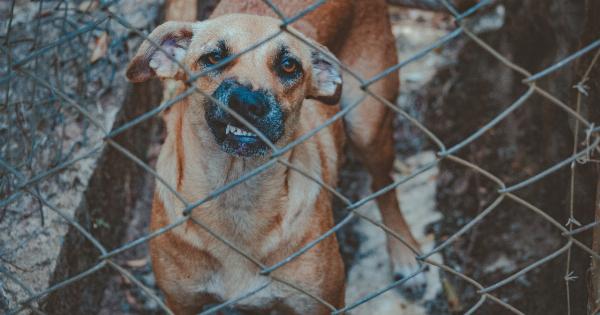Jumping is a natural behavior for dogs, but it can become a problem when they start using their owners or guests as launching pads.
Not only is it annoying and potentially dangerous, especially for children or elderly individuals, but it can also lead to damage or accidental injuries.
Why Do Dogs Jump?
Understanding why dogs jump is the first step in addressing and correcting this behavior. Dogs typically jump out of excitement, insecurity, or to seek attention from their owners or visitors.
They might also jump when they are anxious or want to assert dominance.
It’s important to note that dogs don’t jump with malicious intent. Instead, it is their way of expressing their emotions and trying to engage with their humans.
However, it’s crucial to teach them appropriate ways to interact without resorting to jumping.
Consistency is Key
When it comes to training your dog not to jump, consistency is key. You need to establish and reinforce clear boundaries so that your dog understands what behavior is acceptable and what is not.
Here are some effective strategies to help you train your dog not to jump over you:.
1. Ignore the Jumping Behavior
The first and most important rule is to ignore your dog whenever they jump on you. This means no eye contact, no speaking, and no physical contact until they calm down.
By doing this, you are teaching your dog that jumping will not get them the attention they desire, and they will learn to seek alternative ways to interact with you.
2. Teach the “Off” Command
Teaching your dog the “off” command is a valuable tool in training them not to jump. Start by using treats to lure your dog off from you when they jump. As soon as they have all their paws on the ground, reward them with a treat and praise.
Repeat this exercise consistently, gradually transitioning from treats to verbal cues such as “off.” Remember to reward and praise your dog every time they respond appropriately.
3. Reward Good Behavior
Positive reinforcement is a powerful tool in dog training. Whenever your dog greets you or visitors without jumping, reward them with treats, praise, and petting.
Dogs thrive on positive attention, and they will soon associate good behavior with positive rewards. Over time, they will learn that staying calm and greeting people politely is the way to receive attention and love.
4. Teach Alternative Greetings
Provide your dog with alternative behaviors to replace jumping. For example, you can train your dog to sit or offer a paw when greeting people.
By redirecting their natural instinct to jump into a more appropriate behavior, you are setting them up for success. Consistency is crucial here as well. Encourage your guests to wait for your dog to sit before giving them attention.
5. Use Leashes or Tethers
If your dog tends to jump on guests when they enter your home, consider using a leash or tether to limit their movement. This will allow you to control their behavior and prevent them from jumping.
As they learn to greet people calmly, you can gradually reduce the use of leashes and tethers.
6. Socialize Your Dog
Proper socialization is essential in curbing jumping behavior. Expose your dog to various situations, people, and animals, so they become familiar with different environments and learn appropriate ways to interact.
Enroll them in obedience classes or consult with a professional trainer who can help you reinforce obedience and social skills.
7. Seek Professional Help if Needed
If your dog’s jumping behavior persists despite your efforts, it may be beneficial to consult with a professional dog trainer or behaviorist.
They can assess your dog’s specific needs and provide guidance and strategies to address the issue effectively. Sometimes, dogs may jump due to underlying anxiety or fear, which requires expert intervention.
8. Consistently Enforce House Rules
Consistency is vital in any aspect of dog training. Make sure all members of your household and guests are aware of the training rules and consistently enforce them.
If your dog receives mixed signals or inconsistent responses, it can confuse them and make training more challenging.
9. Provide Mental and Physical Stimulation
In some cases, dogs may resort to jumping due to excess energy or boredom. Ensure your dog receives enough daily exercise and mental stimulation through activities such as puzzle toys, obedience training, interactive playtime, and regular walks.
A well-exercised and mentally engaged dog is less likely to engage in unwanted behaviors.
10. Be Patient and Kind
Remember, training takes time and patience. Avoid using punishment or harsh methods, as these can have negative consequences and potentially worsen the behavior. Instead, focus on positive reinforcement and reward-based training techniques.
Celebrate even small victories and stay committed to training your dog consistently.

























